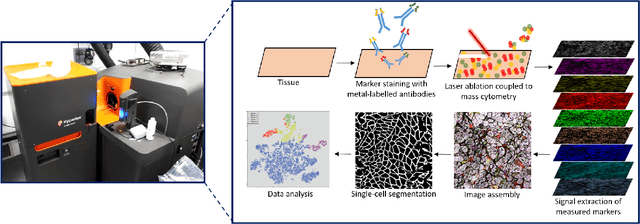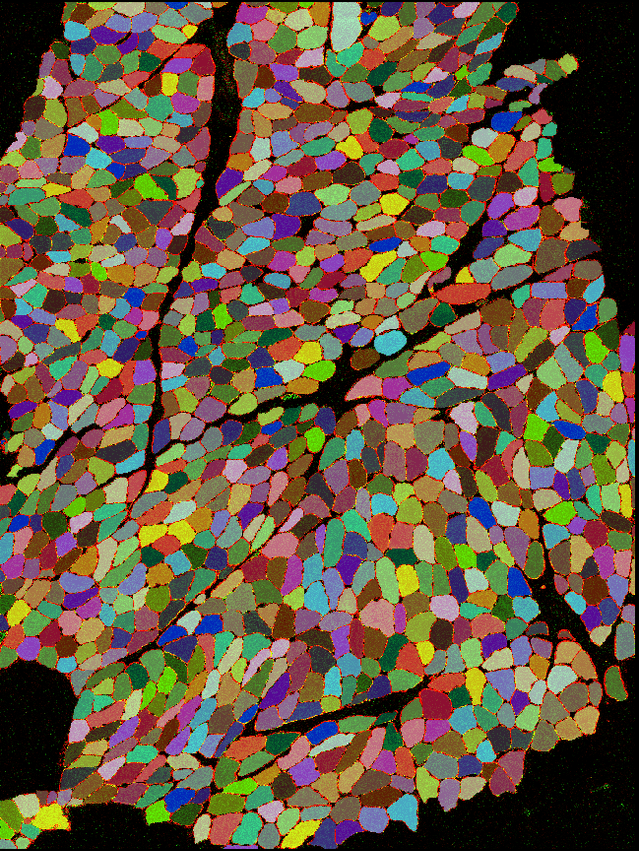Conor Lawless
NCL-SM: A Fully Annotated Dataset of Images from Human Skeletal Muscle Biopsies
Nov 25, 2023Abstract:Single cell analysis of human skeletal muscle (SM) tissue cross-sections is a fundamental tool for understanding many neuromuscular disorders. For this analysis to be reliable and reproducible, identification of individual fibres within microscopy images (segmentation) of SM tissue should be automatic and precise. Biomedical scientists in this field currently rely on custom tools and general machine learning (ML) models, both followed by labour intensive and subjective manual interventions to fine-tune segmentation. We believe that fully automated, precise, reproducible segmentation is possible by training ML models. However, in this important biomedical domain, there are currently no good quality, publicly available annotated imaging datasets available for ML model training. In this paper we release NCL-SM: a high quality bioimaging dataset of 46 human SM tissue cross-sections from both healthy control subjects and from patients with genetically diagnosed muscle pathology. These images include $>$ 50k manually segmented muscle fibres (myofibres). In addition we also curated high quality myofibre segmentations, annotating reasons for rejecting low quality myofibres and low quality regions in SM tissue images, making these annotations completely ready for downstream analysis. This, we believe, will pave the way for development of a fully automatic pipeline that identifies individual myofibres within images of tissue sections and, in particular, also classifies individual myofibres that are fit for further analysis.
Introducing NCL-SM: A Fully Annotated Dataset of Images from Human Skeletal Muscle Biopsies
Nov 18, 2023



Abstract:Single cell analysis of skeletal muscle (SM) tissue is a fundamental tool for understanding many neuromuscular disorders. For this analysis to be reliable and reproducible, identification of individual fibres within microscopy images (segmentation) of SM tissue should be precise. There is currently no tool or pipeline that makes automatic and precise segmentation and curation of images of SM tissue cross-sections possible. Biomedical scientists in this field rely on custom tools and general machine learning (ML) models, both followed by labour intensive and subjective manual interventions to get the segmentation right. We believe that automated, precise, reproducible segmentation is possible by training ML models. However, there are currently no good quality, publicly available annotated imaging datasets available for ML model training. In this paper we release NCL-SM: a high quality bioimaging dataset of 46 human tissue sections from healthy control subjects and from patients with genetically diagnosed muscle pathology. These images include $>$ 50k manually segmented muscle fibres (myofibres). In addition we also curated high quality myofibres and annotated reasons for rejecting low quality myofibres and regions in SM tissue images, making this data completely ready for downstream analysis. This, we believe, will pave the way for development of a fully automatic pipeline that identifies individual myofibres within images of tissue sections and, in particular, also classifies individual myofibres that are fit for further analysis.
Explainable Deep Learning to Profile Mitochondrial Disease Using High Dimensional Protein Expression Data
Oct 31, 2022Abstract:Mitochondrial diseases are currently untreatable due to our limited understanding of their pathology. We study the expression of various mitochondrial proteins in skeletal myofibres (SM) in order to discover processes involved in mitochondrial pathology using Imaging Mass Cytometry (IMC). IMC produces high dimensional multichannel pseudo-images representing spatial variation in the expression of a panel of proteins within a tissue, including subcellular variation. Statistical analysis of these images requires semi-automated annotation of thousands of SMs in IMC images of patient muscle biopsies. In this paper we investigate the use of deep learning (DL) on raw IMC data to analyse it without any manual pre-processing steps, statistical summaries or statistical models. For this we first train state-of-art computer vision DL models on all available image channels, both combined and individually. We observed better than expected accuracy for many of these models. We then apply state-of-the-art explainable techniques relevant to computer vision DL to find the basis of the predictions of these models. Some of the resulting visual explainable maps highlight features in the images that appear consistent with the latest hypotheses about mitochondrial disease progression within myofibres.
 Add to Chrome
Add to Chrome Add to Firefox
Add to Firefox Add to Edge
Add to Edge